Bonsai Trees for Our Satgurus
March 19, 2024Tandu brought a blossoming bougainvillea into the garden, a marvelous bonsai that is a bit of a show-stopper. It inspired us to go out today and capture the various shapes and species he has nurtured for decades. He placed them near each of the Satgurus, as you will see in the slideshow.
This collection of about 12 plants has added a third level of refinement to Siva's Sacred Gardens. Level one is the wild underbrush, the untouched-by-human-hands thickets, mostly wild guava. Level two is the cultured and cultivated sections, where we cleared, formed paths and ponds, planted thousands of tropical species. Now we have a third level, the bonsais, which are stunningly refined and elegant (and maintenance-intensive).
Enjoy the slideshow.
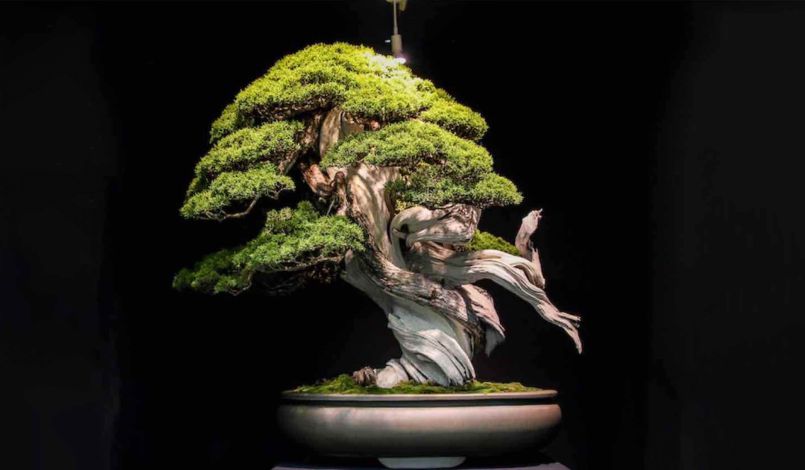
We begin in Japan with a remarkable and expensive bonsai. This Sargent Juniper bonsai sold for $350,000 was auctioned during the Taikan-ten Bonsai exhibition in Kyoto, Japan. It is thought to be over 250 years old. One bonsai sold for four times that amount!
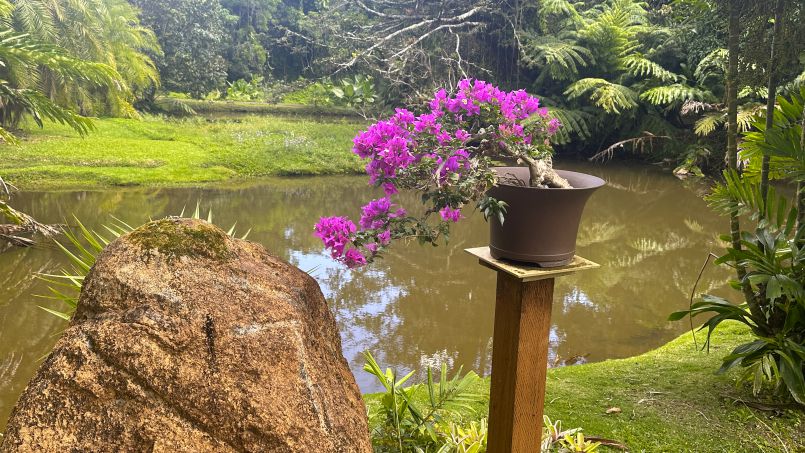
The bougainvilla that is blooming near the Silpi Bronze Pavilion
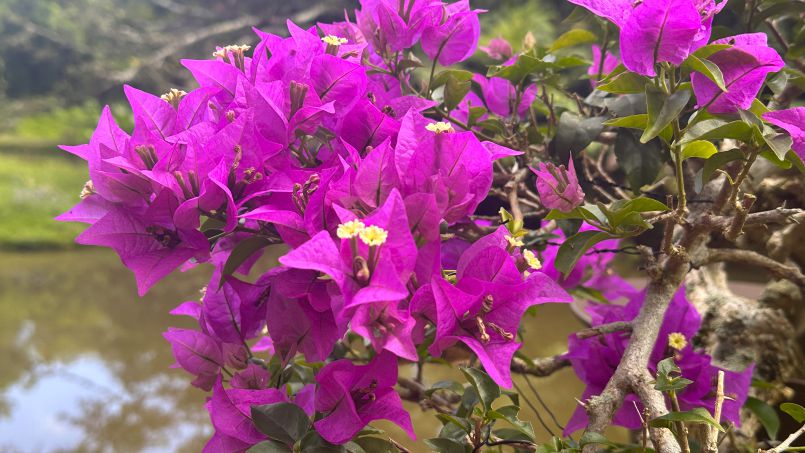
Loves to be in the sun.

This is Satguru Nandinatha\
s ficus in a pot. With such shallow roots, bonsais must be watered almost daily if it does not rain. '
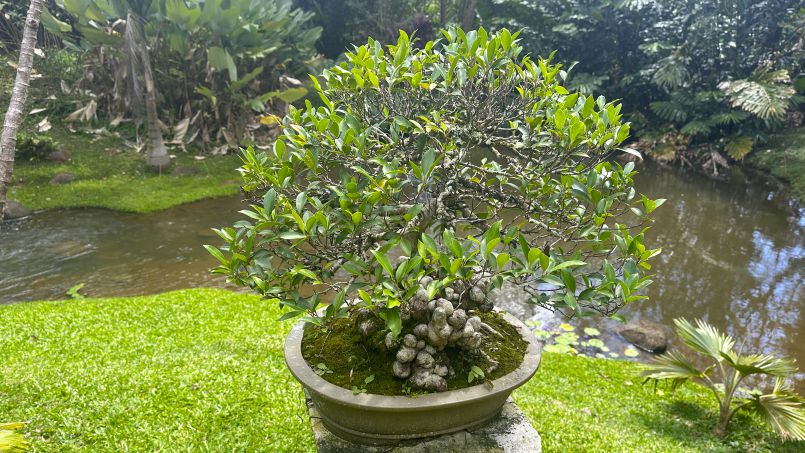
Tirumular has a nobby one.
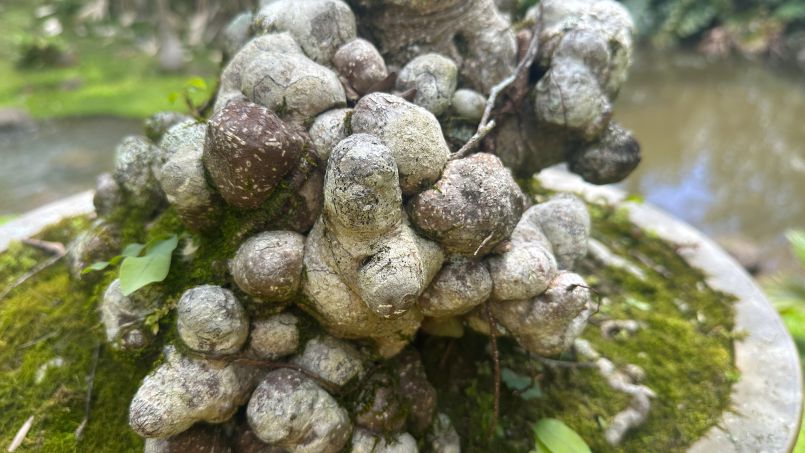
An amazing trunk. Wonder what caused it to develop like this?
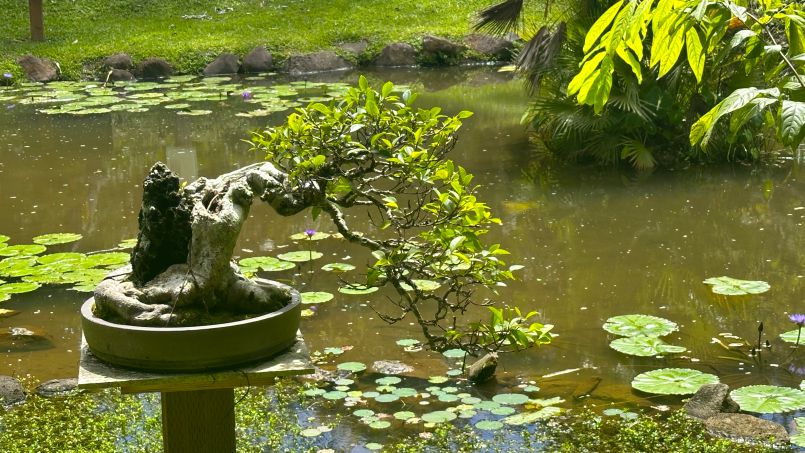
Rishi from the Himalayas has one with a stout and woody trunk.
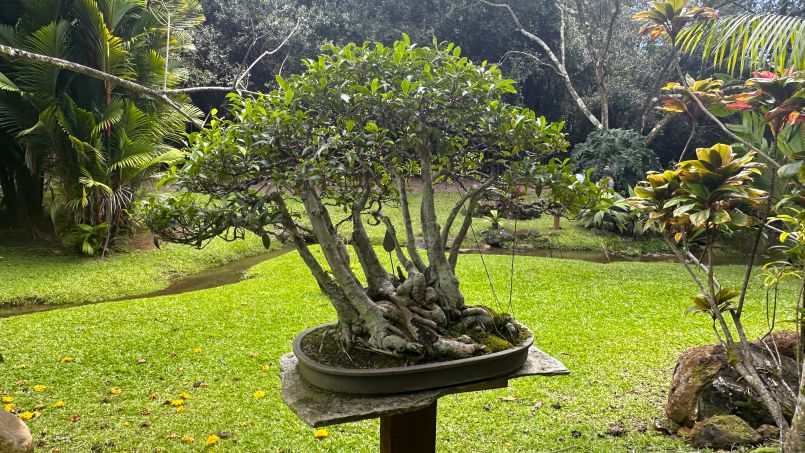
Kadaitswami looks out on this multi-trunked bonsai called Yose-ue in Japanese. Meant to mimic a miniature forest.
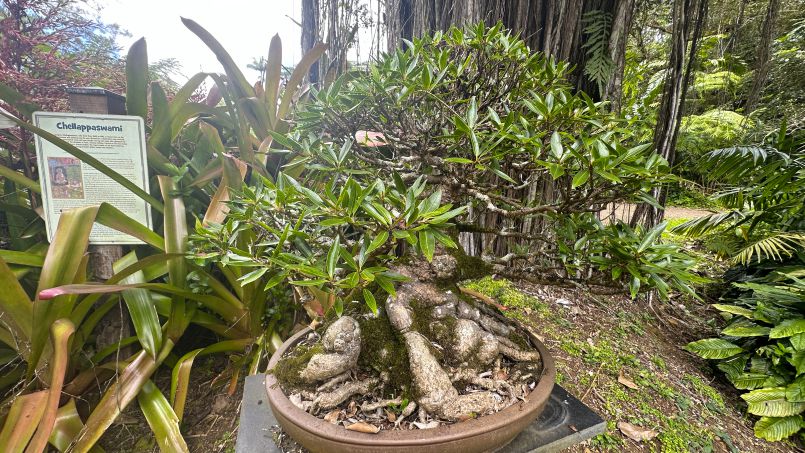
Chellappaswami\
s personal bonsai'
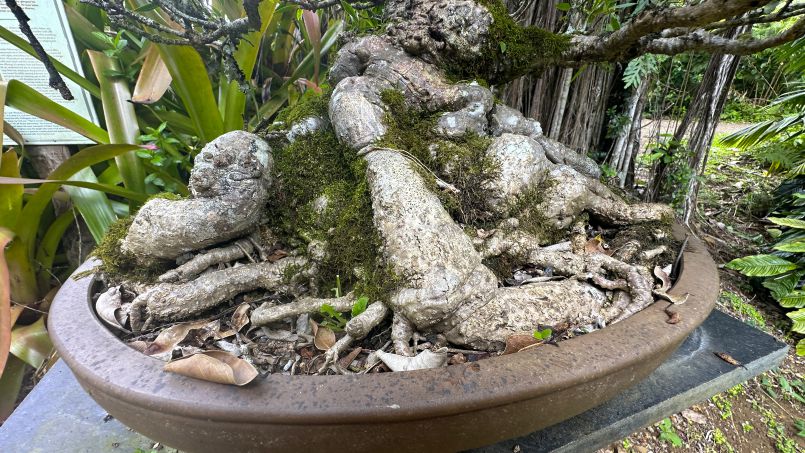
It too has a massive trunk after decades of being confined in a shallow pot.
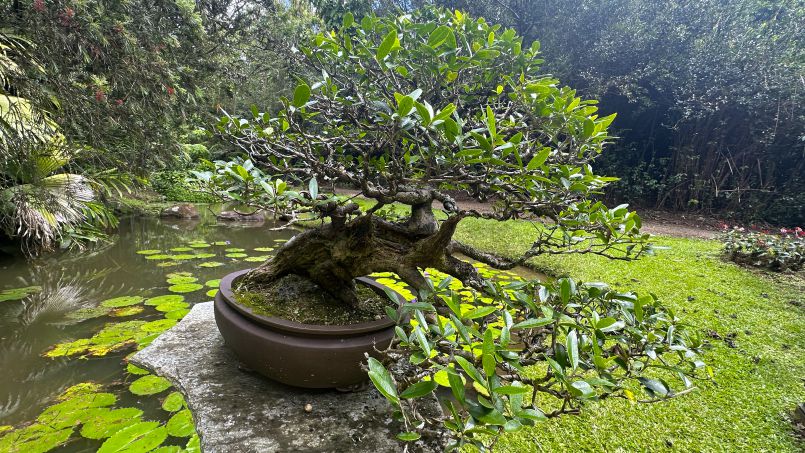
Yogaswami watches over this one.
Gurudeva\
s bonsai changes the most, as Tandu likes to bring him the best in show. '
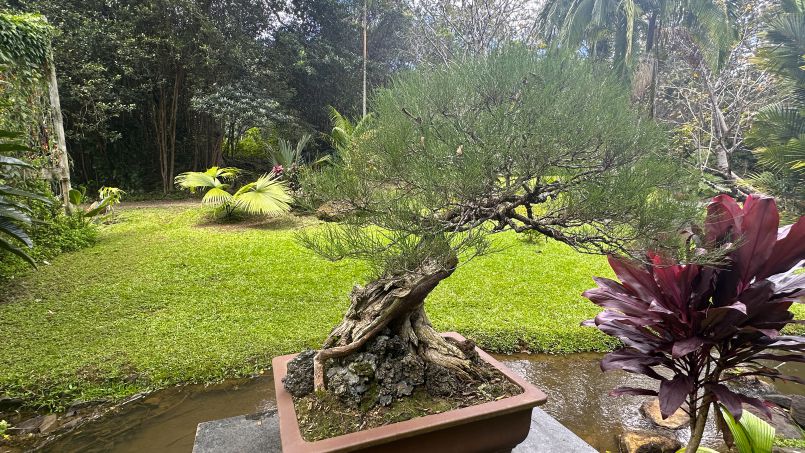
It\
s a pine with a sweeping shape that speaks of the wind. '
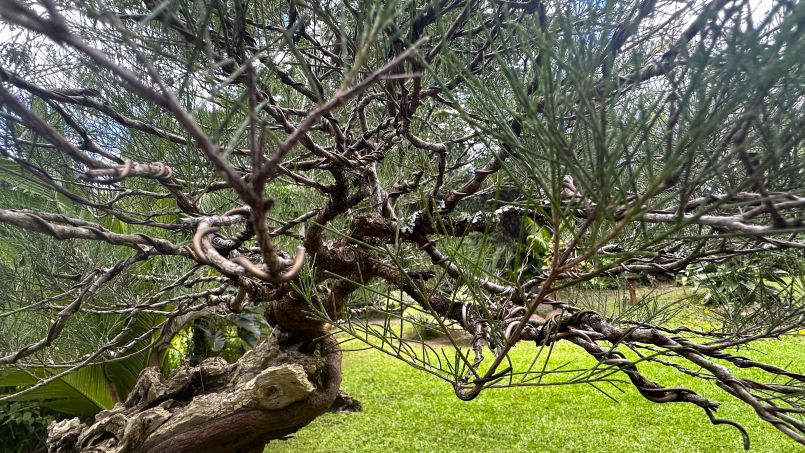
Looking closely you can see the dark wires Tandu uses to shape the branches when they are young and pliable.
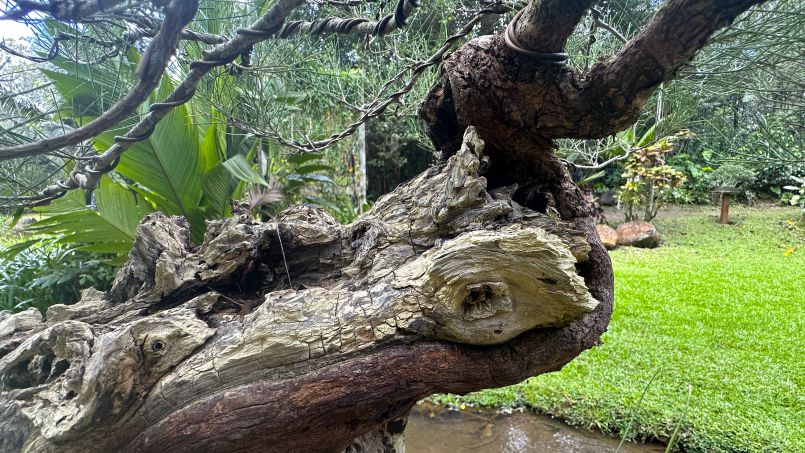
Old wood that hints of earlier stages of the tree\
s life. '
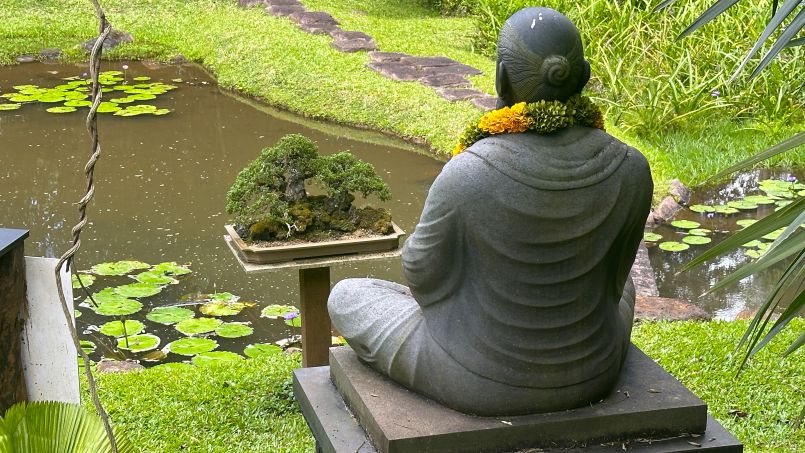
Bodhinatha has a wonderful specimen and as you see he keeps a vigilant eye on it.
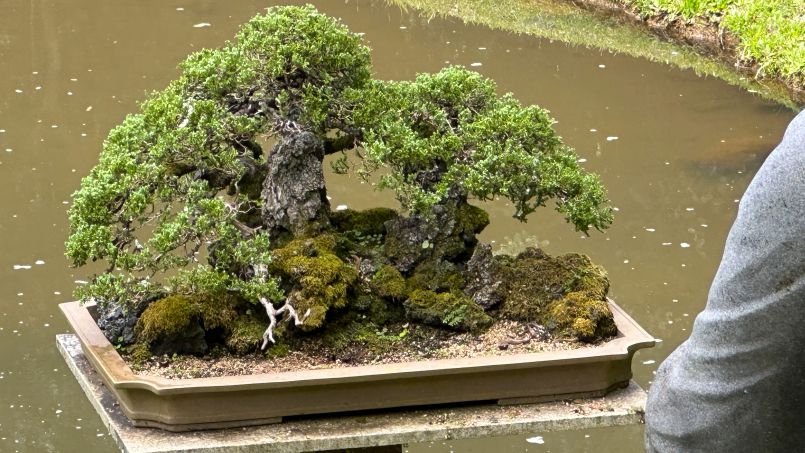
This two tree form is called Sokan, meaning double trunk in Japanese. The arrangement aims to create a natural and harmonious balance between the two trunks, reflecting the beauty and complexity of nature in miniature form.
}
];